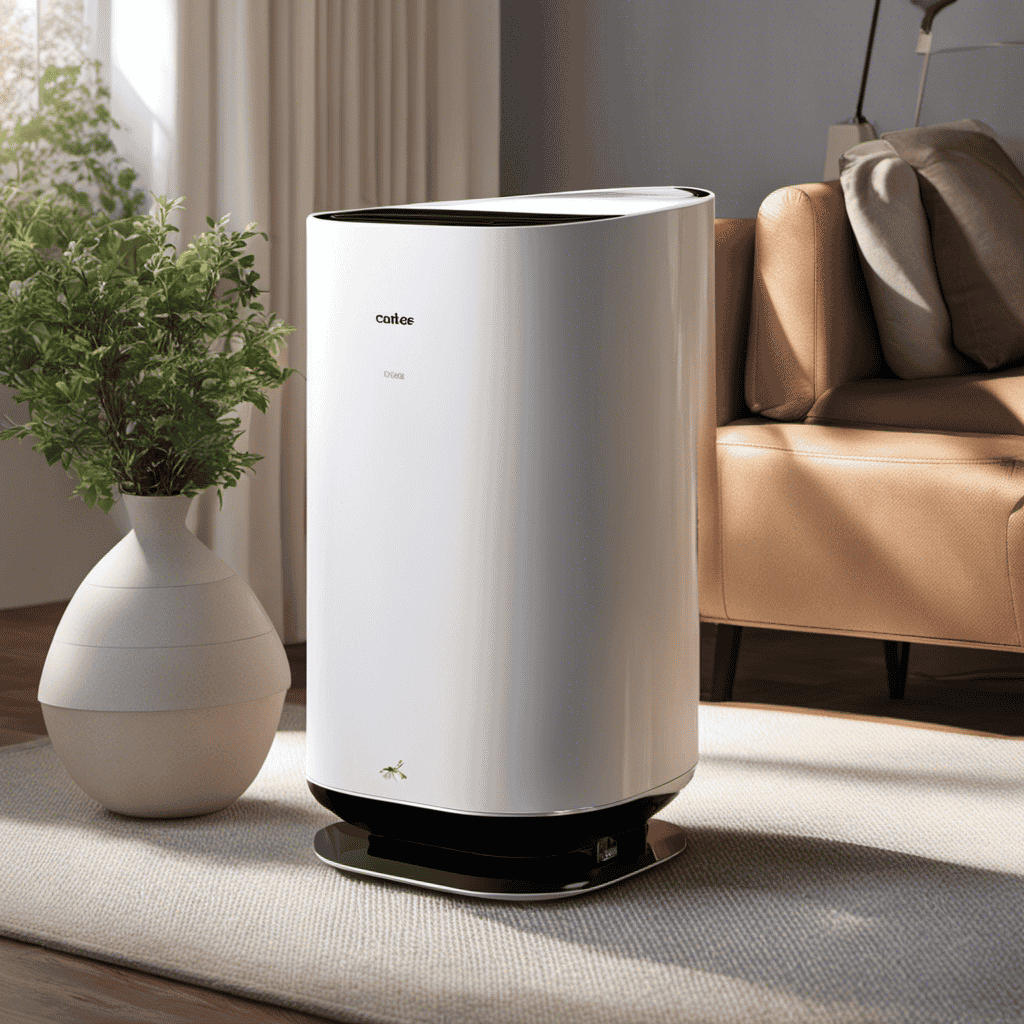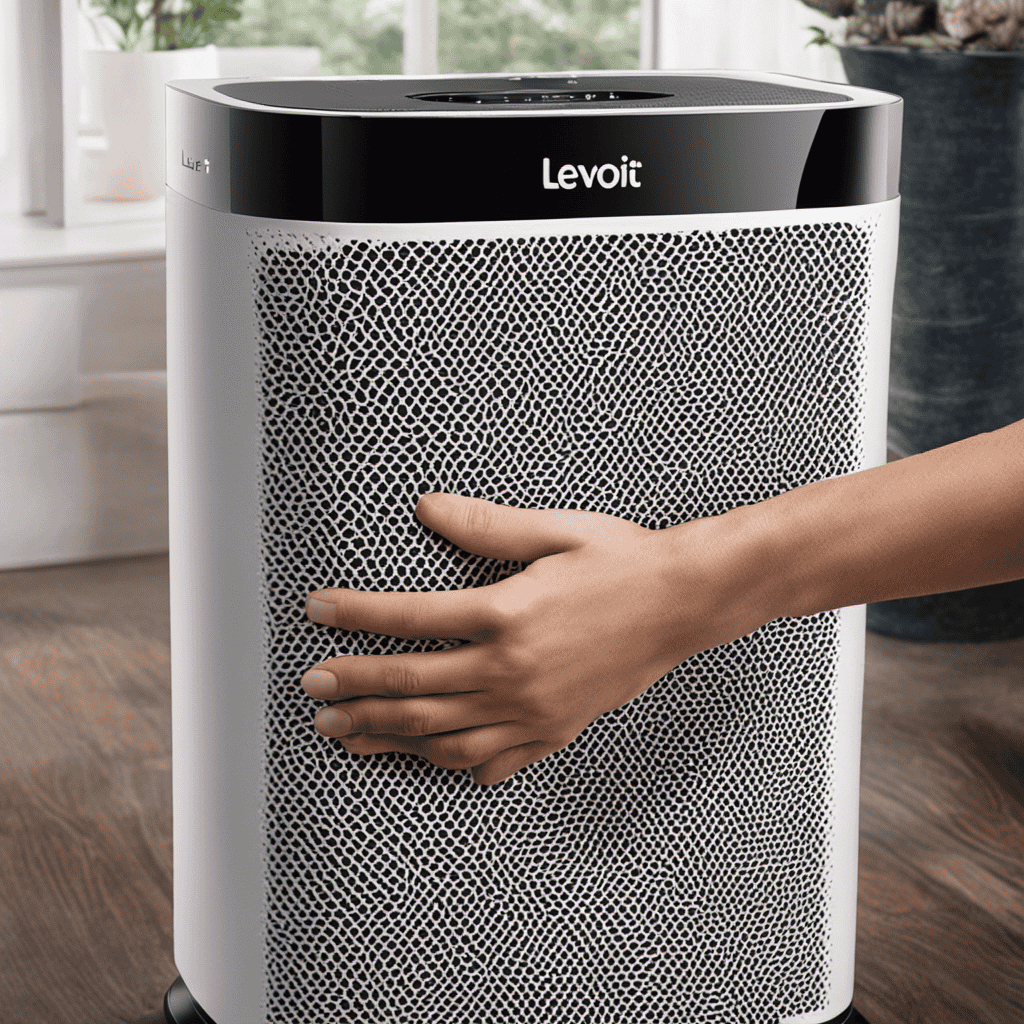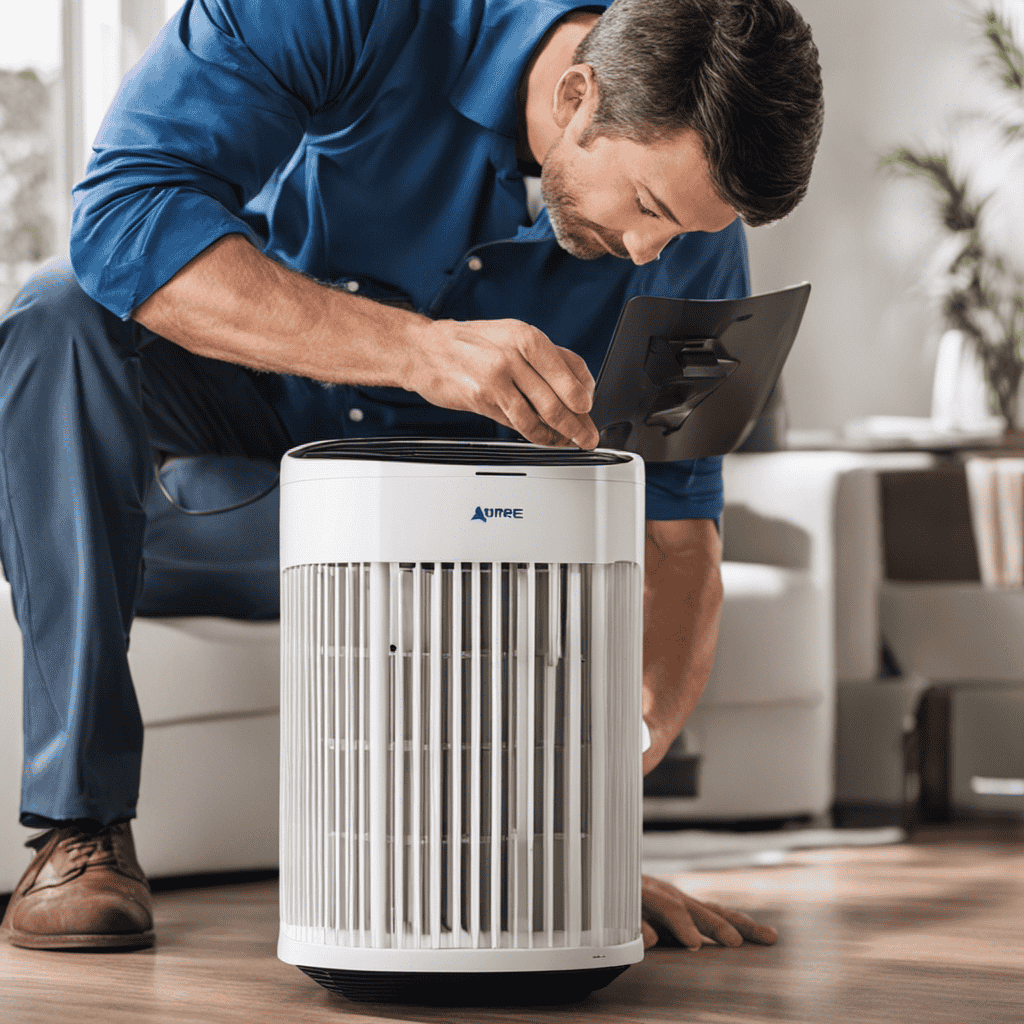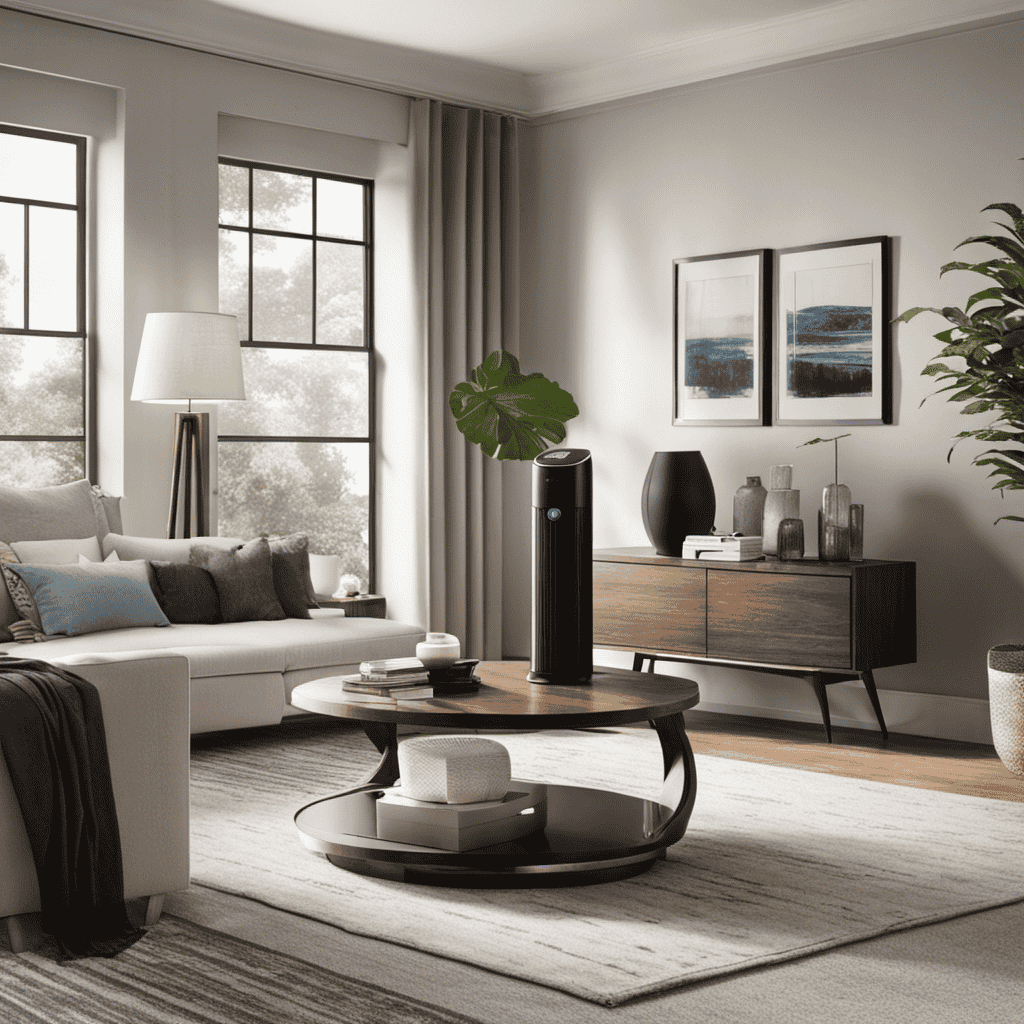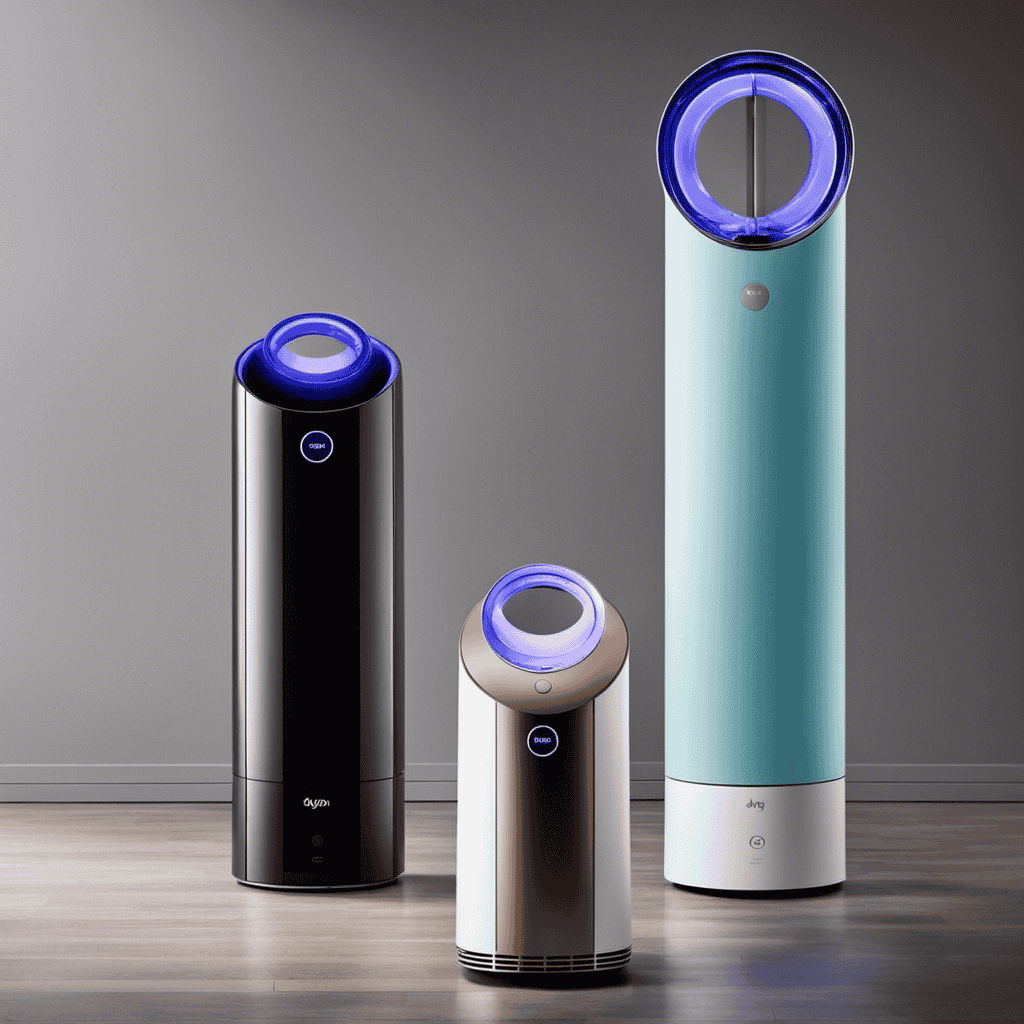I have always been curious about how air purifiers function to clean the air we inhale. It is intriguing to contemplate the scientific principles involved and the various contaminants they can eliminate.
In this article, we will delve into the intricate details of air purification. We’ll explore how air purifiers capture and trap airborne particles, the crucial role of filters in the process, and the various technologies used for air purification.
Additionally, we’ll discuss important factors to consider when choosing the right air purifier for your needs.
Let’s dive in and unravel the mystery behind air purification!
Key Takeaways
- Air purifiers remove pollutants and contaminants from the air, improving indoor air quality.
- Air purifiers use filtration mechanisms such as mechanical filtration, electrostatic precipitation, and activated carbon adsorption to capture and trap airborne particles.
- HEPA filters are highly efficient at removing small particles like dust, pollen, and pet dander.
- Regular maintenance, including cleaning or replacing filters, is important to maintain the effectiveness of air purifiers.
The Science Behind Air Purification
The science behind how an air purifier purifies the air is fascinating. Air purifiers work by removing pollutants and contaminants from the air, improving indoor air quality.
One of the key mechanisms used by air purifiers is filtration. They use filters to trap particles such as dust, pollen, pet dander, and smoke. These filters are designed to capture even the smallest particles, ensuring that the air you breathe is clean and free from harmful substances.
Regular air purifier maintenance, such as cleaning or replacing filters, is important to maintain their effectiveness.
By using air purifiers, you can experience several benefits, including reducing allergies and respiratory issues, eliminating unpleasant odors, and creating a healthier, more comfortable living environment.
Types of Air Pollutants Removed by Air Purifiers
Some common types of pollutants removed by air purifiers include dust, pollen, pet dander, and smoke.
Air purifiers play a crucial role in improving indoor air quality, particularly for individuals with allergies or respiratory health issues.
Dust particles, often composed of dead skin cells, textile fibers, and soil particles, can trigger allergies and respiratory symptoms.
Pollen, a common allergen, can cause hay fever and worsen symptoms for people with asthma.
Pet dander, tiny flecks of skin shed by animals, can also trigger allergic reactions.
Smoke, whether from cigarettes or cooking, contains harmful particles and chemicals that can irritate the respiratory system.
How Air Purifiers Capture and Trap Airborne Particles
When it comes to understanding how air purifiers capture and trap airborne particles, it is essential to delve into the filtration mechanisms they employ.
Different types of air purifiers utilize various filtration processes such as mechanical filtration, electrostatic precipitation, and activated carbon adsorption to capture pollutants.
The efficiency of capturing pollutants varies depending on the type of particles, the size of the filter, and the technology used in the air purifier.
Filtration Mechanisms Explained
Different types of air purifiers use various filtration mechanisms to remove pollutants from the air. These filtration techniques are designed to capture and trap airborne particles, improving the air quality in indoor spaces.
One common filtration mechanism is the use of HEPA filters, which are highly efficient at removing small particles such as dust, pollen, and pet dander. HEPA filters work by forcing air through a fine mesh that traps these particles, preventing them from recirculating in the air.
Another filtration technique is activated carbon filtration, which is effective in removing odors, chemicals, and volatile organic compounds (VOCs) from the air. Activated carbon filters work by adsorption, where the contaminants stick to the surface of the carbon.
The benefits of air purification include reducing allergies, improving respiratory health, and creating a cleaner and more comfortable living environment.
Types of Airborne Particles
One common filtration mechanism used in air purifiers is the HEPA filter, which is highly efficient at removing small particles such as dust, pollen, and pet dander. Airborne particles can have significant health effects, especially for individuals with respiratory conditions or allergies. Understanding the different types of airborne particles is crucial in selecting the right air purifier for your needs.
Here are some common sources of indoor air pollution and the particles they generate:
- Tobacco smoke: Releases fine particulate matter, volatile organic compounds (VOCs), and carcinogens.
- Mold spores: Can cause allergic reactions and respiratory issues.
- Cooking emissions: Produce particles like grease, oil, and smoke.
- Pet dander: Contains allergens that can trigger asthma or allergies.
- Dust mites: Tiny insects that produce waste particles, a common allergen.
Efficiency of Capturing Pollutants
The efficiency of capturing pollutants with a HEPA filter is highly effective in removing small particles such as dust, pollen, and pet dander. HEPA stands for High-Efficiency Particulate Air, and these filters are designed to trap particles as small as 0.3 microns in size. This level of efficiency is crucial for pollutant removal and air quality improvement.
The filter works by using a dense web of fibers that create a maze-like structure, forcing air to pass through and trapping particles in the process. As air circulates through the filter, it becomes cleaner and healthier to breathe. This is especially important for individuals with allergies or respiratory conditions, as the HEPA filter can significantly reduce the presence of allergens and irritants in the air.
Overall, the effectiveness of HEPA filters in capturing pollutants contributes to a substantial improvement in indoor air quality.
The Role of Filters in Air Purification
Filters in air purifiers play a crucial role in reducing pollutants and improving air quality. They are designed to capture and remove various types of contaminants from the air, ensuring that the air we breathe is clean and safe.
Here are some key points about the role of filters in air purification:
-
Pre filters: These filters are the first line of defense and capture large particles like dust, pet hair, and pollen.
-
HEPA filters: High Efficiency Particulate Air (HEPA) filters are capable of removing 99.97% of particles as small as 0.3 microns, including allergens, mold spores, and certain bacteria.
-
Activated carbon filters: These filters use a highly porous form of carbon to adsorb harmful gases, chemicals, and odors. They are especially effective in removing volatile organic compounds (VOCs) and cigarette smoke.
-
Benefits of activated carbon: Apart from removing harmful substances, activated carbon filters also help to improve the overall odor of the air, making it fresher and more pleasant.
-
Filter replacement: It is important to regularly replace the filters in air purifiers to maintain their effectiveness and ensure optimal performance.
Understanding the Different Air Purification Technologies
When it comes to air purification, there are various types of purification methods that can be employed to remove pollutants from the air. These methods include filtration, ionization, and photocatalytic oxidation, among others.
Each of these technologies has its own strengths and weaknesses, and understanding their effectiveness is crucial in determining the most suitable purification method for specific air quality needs.
Types of Purification Methods
To understand how an air purifier purifies the air, it is important to know about different types of purification methods. There are several methods used by air purifiers to effectively clean the air we breathe. These methods include:
- HEPA filtration: This method uses a dense filter to trap particles as small as 0.3 microns, ensuring cleaner air.
- Activated carbon filtration: This method uses a porous material to absorb and eliminate odors, gases, and chemicals.
- UV germicidal irradiation: This method uses ultraviolet light to kill bacteria, viruses, and other microorganisms in the air.
- Ionization: This method releases negative ions into the air, which attach to particles and make them easier to capture in filters.
- Ozone generation: This method produces ozone, which reacts with pollutants and neutralizes them.
Understanding these different purification methods can help us maintain our air purifiers effectively and reap the benefits of using them.
Now, let’s explore the effectiveness of these various technologies in the next section.
Effectiveness of Different Technologies
Different technologies used in air purifiers have varying levels of effectiveness in removing pollutants and improving air quality.
One such technology is ozone generators, which are designed to eliminate odors and kill bacteria and viruses in the air. However, the effectiveness of ozone generators in purifying the air is a subject of controversy. While they can effectively neutralize certain pollutants, they also produce ozone, which can be harmful to respiratory health.
Clean air is of utmost importance in maintaining good respiratory health, as pollutants in the air can cause asthma, allergies, and other respiratory conditions. Therefore, it is crucial to choose air purifiers that employ effective technologies without producing harmful byproducts like ozone.
Factors to Consider When Choosing an Air Purifier
Consider factors such as the size of your space and the type of pollutants you want to remove when choosing an air purifier. To make an informed decision, here are some important points to keep in mind:
-
Room size: Ensure that the air purifier you choose is suitable for the size of the room you intend to use it in. A purifier that is too small may not effectively clean the air, while one that is too large may unnecessarily consume more energy.
-
Filtration system: Look for air purifiers with HEPA (High-Efficiency Particulate Air) filters, as they can effectively capture and remove airborne particles such as dust, pollen, pet dander, and mold spores.
-
Maintenance requirements: Consider the maintenance needs of the air purifier, such as filter replacement and cleaning. Regular maintenance ensures the device continues to function optimally and prolongs its lifespan.
-
Noise level: Some air purifiers can produce noise while operating. If noise is a concern for you, look for models with a quiet operation mode.
-
Additional features: Some air purifiers come with extra features like air quality sensors, programmable timers, and remote controls, which can enhance convenience and functionality.
Conclusion
In conclusion, air purifiers are like superheroes for our indoor air quality. They use advanced technologies to capture and trap a wide range of airborne pollutants, from dust and pollen to mold spores and pet dander.
With their powerful filters, air purifiers efficiently remove these harmful particles, ensuring that we breathe clean and fresh air. When choosing an air purifier, it is important to consider factors such as room size, filtration efficiency, and noise level.
So, let your air purifier be your trusty sidekick in the fight against indoor air pollution.
